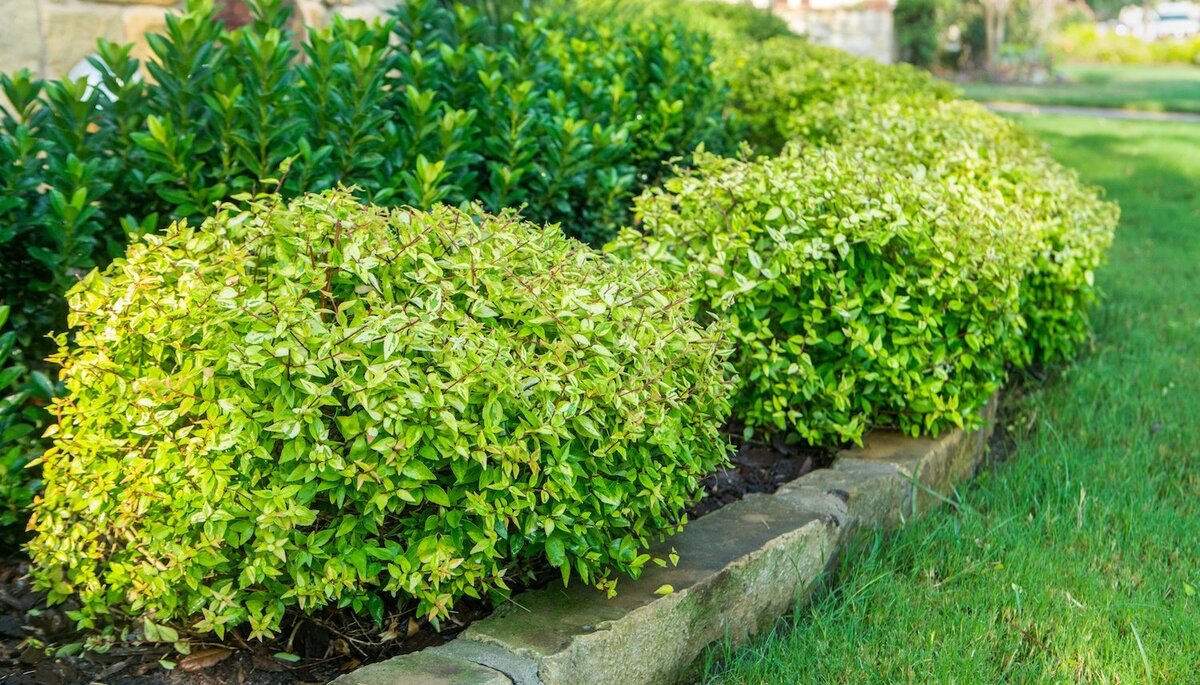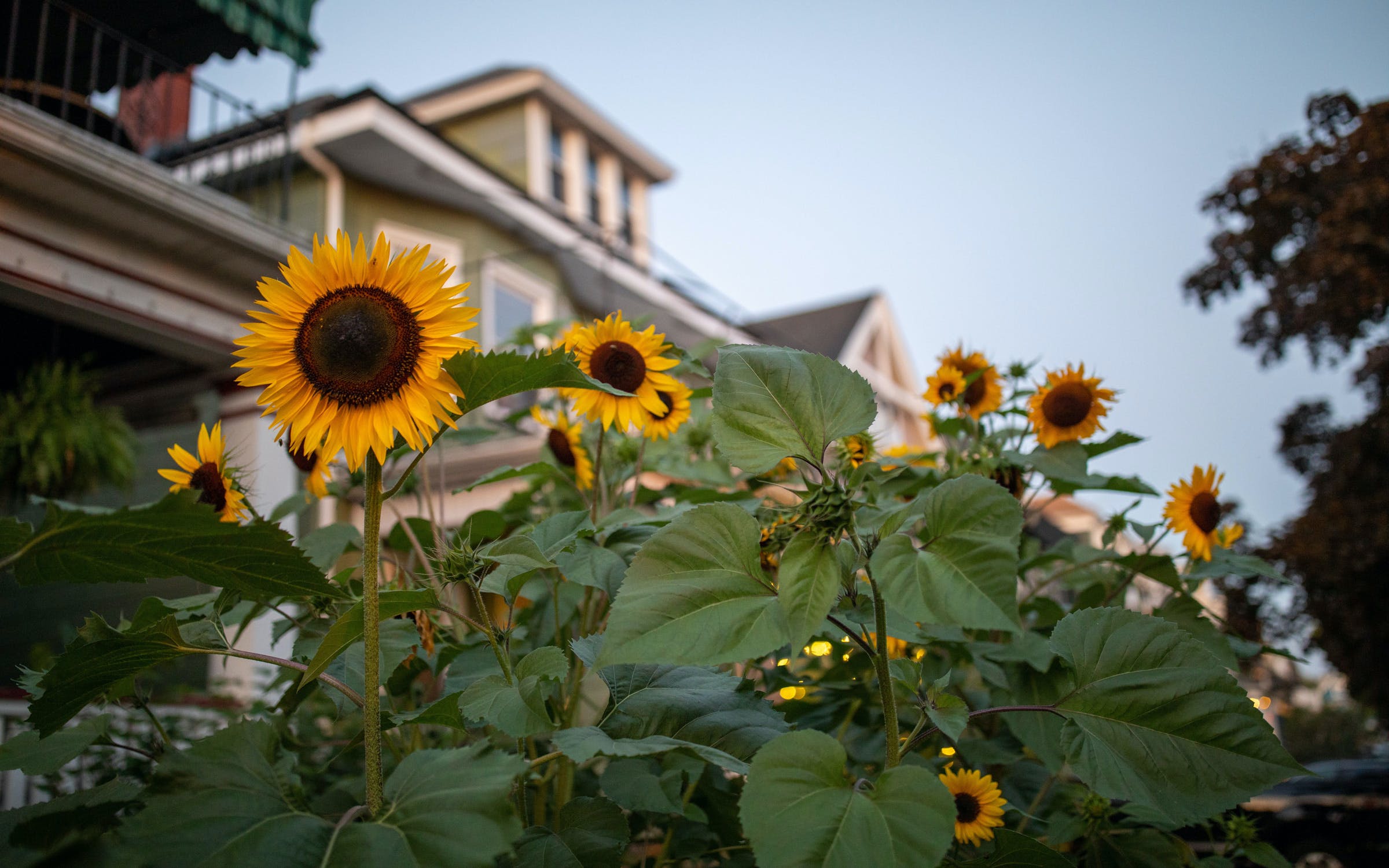Home>Types of Gardening>Ornamental Gardening>When Do You Plant Tulip Bulbs In Texas


Ornamental Gardening
When Do You Plant Tulip Bulbs In Texas
Modified: January 22, 2024
Discover the best time for planting tulip bulbs in Texas and get expert tips for successful ornamental gardening in the region. Learn when and how to plant tulips for vibrant spring blooms!
(Many of the links in this article redirect to a specific reviewed product. Your purchase of these products through affiliate links helps to generate commission for Chicagolandgardening.com, at no extra cost. Learn more)
Table of Contents
Introduction
Tulips are renowned for their vibrant colors and elegant blooms, making them a beloved addition to ornamental gardens. These perennial bulbs are a symbol of spring and are cherished for their ability to enliven any landscape with their stunning display. When it comes to planting tulip bulbs in Texas, it's essential to understand the unique considerations that the region's climate and soil present.
In the Lone Star State, the climate varies significantly from region to region, impacting the optimal timing for planting tulip bulbs. From the humid Gulf Coast to the arid desert regions of West Texas, the diverse landscapes create distinct challenges and opportunities for gardeners seeking to cultivate these exquisite flowers.
This article aims to provide comprehensive guidance on planting and caring for tulip bulbs in Texas. By delving into the nuances of the state's climate and soil composition, as well as the specific needs of tulip bulbs, this guide will equip gardeners with the knowledge and confidence to nurture thriving tulip blooms. Whether you're a seasoned gardener or a novice enthusiast, understanding the intricacies of planting tulip bulbs in Texas will enable you to create a breathtaking floral spectacle in your own backyard.
Throughout this article, we will explore the optimal time for planting tulip bulbs in Texas, the steps to prepare the soil, the process of planting the bulbs, and essential tips for their care and maintenance. By the end, you will be well-versed in the art of cultivating tulips in the unique and diverse landscapes of the Lone Star State. So, let's embark on this horticultural journey and unlock the secrets to growing magnificent tulip blooms in Texas.
Understanding Tulip Bulbs
Tulip bulbs are the underground storage structures of tulip plants, containing all the nutrients and embryonic growth needed for the plant to flourish. These bulbs are categorized as geophytes, meaning they rely on underground storage organs to survive adverse conditions and bloom annually. Understanding the anatomy and lifecycle of tulip bulbs is crucial for successful cultivation.
When selecting tulip bulbs for planting, it’s essential to choose high-quality, healthy bulbs. Look for bulbs that are firm, free from mold or blemishes, and have no signs of rot. The size of the bulb can also indicate the potential size and vigor of the resulting plant, with larger bulbs often producing more robust blooms.
It’s important to note that tulip bulbs require a period of cold dormancy to stimulate flowering. This natural process, known as vernalization, is essential for triggering the biochemical changes that lead to the development of flower buds. In regions with mild winters, such as Texas, providing artificial vernalization by pre-chilling the bulbs in the refrigerator can mimic the cold period necessary for successful blooming.
Furthermore, understanding the different types of tulip bulbs is key to achieving a diverse and visually captivating garden display. Tulip bulbs are classified into various categories based on their flowering characteristics, including early, mid, and late-season bloomers, as well as single and double-flowering varieties. By strategically selecting a mix of tulip bulb types, gardeners can create a prolonged and enchanting flowering spectacle that evolves throughout the spring season.
As we delve into the intricacies of tulip bulbs and their unique requirements, it becomes evident that these underground marvels hold the key to a vibrant and stunning garden landscape. By grasping the fundamental principles of tulip bulb selection, vernalization, and the diverse array of tulip types, gardeners can lay the groundwork for a successful and visually captivating tulip display.
Planting Tulip Bulbs in Texas
Planting tulip bulbs in Texas requires careful consideration of the region’s climate and soil conditions to ensure the successful establishment and blooming of these beloved flowers. The state’s diverse geography and varying climatic zones necessitate tailored approaches to planting tulip bulbs, taking into account factors such as temperature fluctuations, soil composition, and water availability.
One of the primary challenges for planting tulip bulbs in Texas is the relatively mild winter temperatures, especially in the southern and coastal regions. Tulips require a period of cold dormancy to initiate flowering, and in areas with mild winters, this natural process may be disrupted. To overcome this hurdle, gardeners in Texas can employ pre-chilling techniques, such as refrigerating the bulbs for a specified duration, to simulate the cold period necessary for optimal blooming.
When selecting a planting site for tulip bulbs in Texas, it’s crucial to consider the soil drainage and sunlight exposure. Tulips thrive in well-draining soil to prevent waterlogged conditions that can lead to bulb rot. Additionally, choosing a location with ample sunlight, especially during the early spring months, is essential for promoting healthy growth and vibrant blooms.
Furthermore, the timing of planting tulip bulbs in Texas is a critical factor in ensuring their success. While the state’s climate varies across its regions, a general guideline is to plant tulip bulbs in late fall, typically from late November to early December. This timing allows the bulbs to establish their root systems before the onset of winter and sets the stage for robust growth and flowering in the following spring.
As we navigate the intricacies of planting tulip bulbs in Texas, it becomes evident that adapting traditional planting practices to suit the state’s unique environmental conditions is key to fostering thriving tulip blooms. By addressing the challenges posed by mild winters, optimizing soil drainage and sunlight exposure, and adhering to the appropriate planting timeline, gardeners can set the stage for a spectacular tulip display that embodies the beauty of spring in the Lone Star State.
Best Time to Plant Tulip Bulbs in Texas
Determining the optimal time for planting tulip bulbs in Texas is crucial for ensuring their successful establishment and vibrant flowering. The diverse climate across the state necessitates a nuanced approach to timing, taking into account variations in temperature, precipitation, and regional microclimates. By aligning the planting schedule with the specific conditions of each region, gardeners can maximize the potential for robust and captivating tulip displays.
In Texas, the best time to plant tulip bulbs generally falls in late fall, typically from late November to early December. This timeframe allows the bulbs to take advantage of the cooler temperatures to establish their root systems before the onset of winter. By planting in late fall, gardeners can provide the bulbs with the necessary period of cold dormancy, essential for stimulating flowering in the subsequent spring.
It’s important to note that the timing of tulip bulb planting may vary slightly depending on the specific climatic zone within Texas. In the northern regions, where winter temperatures are cooler and more consistent, planting can lean towards the earlier end of the recommended timeframe. Conversely, in the southern and coastal areas where winters are milder, planting towards early December may be more suitable to mitigate the risk of premature growth due to warmer temperatures.
For gardeners in West Texas, where arid and desert-like conditions prevail, careful attention to soil moisture and temperature fluctuations is crucial when determining the best time for planting tulip bulbs. In these regions, it’s advisable to monitor local weather patterns and soil conditions to align the planting schedule with periods of optimal moisture and cooler temperatures, typically in late November.
By tailoring the planting schedule to the specific climatic nuances of each region within Texas, gardeners can set the stage for a stunning tulip display that thrives in harmony with the state’s diverse landscapes. Understanding the best time to plant tulip bulbs in Texas enables gardeners to leverage the natural rhythms of the seasons and create a vibrant tapestry of spring blooms that embodies the beauty and resilience of these captivating flowers.
Preparing the Soil for Tulip Bulbs
The soil preparation process plays a pivotal role in the successful cultivation of tulip bulbs in Texas. The state’s diverse soil types, ranging from sandy loam in the coastal plains to clayey soils in the eastern regions, necessitate tailored approaches to soil amendment and conditioning. By understanding the specific soil characteristics and implementing targeted preparation techniques, gardeners can create an optimal growing environment for tulip bulbs, setting the stage for healthy growth and abundant blooms.
One of the primary considerations when preparing the soil for tulip bulbs is ensuring proper drainage. Tulips are susceptible to rot and fungal diseases in waterlogged conditions, emphasizing the importance of well-draining soil. In areas with heavy clay soils, incorporating organic matter such as compost or well-rotted manure can improve drainage and soil structure, creating a more hospitable environment for the bulbs’ root development.
Additionally, assessing the soil pH is essential for optimizing the growing conditions for tulip bulbs. These flowers thrive in slightly acidic to neutral soil, with a pH range of 6.0 to 7.0. Conducting a soil test to determine the pH level and, if necessary, adjusting it with the application of lime or sulfur can create an ideal pH balance that supports the bulbs’ nutrient uptake and overall health.
When preparing the soil for tulip bulbs in Texas, it’s beneficial to incorporate a balanced, slow-release fertilizer into the planting area. This provides the bulbs with essential nutrients as they establish their root systems and prepares the soil for sustained growth and flowering in the following spring. Choosing a fertilizer with a formulation tailored to bulb and root development can further enhance the bulbs’ vigor and resilience.
Furthermore, clearing the planting area of weeds and debris and ensuring adequate sunlight exposure are crucial components of soil preparation for tulip bulbs. By providing a clean and unobstructed growing environment, gardeners can minimize competition for resources and create an optimal setting for the bulbs to thrive.
As we delve into the intricacies of soil preparation for tulip bulbs in Texas, it becomes evident that tailoring the approach to address the state’s diverse soil types and climatic nuances is key to fostering healthy growth and vibrant blooms. By optimizing soil drainage, pH balance, and nutrient availability, gardeners can create an ideal foundation for cultivating stunning tulip displays that flourish in harmony with the unique landscapes of the Lone Star State.
Planting Tulip Bulbs
The process of planting tulip bulbs in Texas encompasses a series of strategic steps aimed at ensuring the bulbs’ successful establishment and subsequent blooming. From selecting the appropriate planting site to implementing proper spacing and depth considerations, each aspect of the planting process contributes to creating an optimal environment for the bulbs to thrive and adorn the garden with their vibrant blooms.
When selecting a planting site for tulip bulbs, it’s essential to choose an area with well-draining soil and ample sunlight exposure. These conditions are vital for promoting healthy root development and robust flowering. Additionally, considering the aesthetic arrangement and potential color combinations of the tulip varieties being planted can elevate the visual impact of the garden display.
The depth and spacing of tulip bulb planting play a crucial role in determining the bulbs’ growth and blooming potential. As a general guideline, tulip bulbs should be planted at a depth approximately three times their diameter, ensuring they are adequately protected and insulated from temperature fluctuations. Proper spacing between bulbs, typically 4 to 6 inches apart, allows for optimal root development and prevents overcrowding, enabling each bulb to flourish to its full potential.
As gardeners embark on the planting process, incorporating a layer of organic mulch over the soil surface can provide insulation and moisture retention, contributing to the overall health and vigor of the bulbs. Mulching also helps regulate soil temperature, mitigating the impact of fluctuating weather conditions and promoting stable growth throughout the bulbs’ development cycle.
Furthermore, integrating a watering regimen following the planting of tulip bulbs is essential for facilitating the initial stages of growth. While tulips are relatively low-maintenance once established, ensuring adequate moisture during the early stages of development can set the foundation for robust root establishment and subsequent flowering.
By adhering to the principles of strategic site selection, proper depth and spacing, mulching, and initial watering, gardeners can orchestrate the planting of tulip bulbs in Texas with precision and foresight. These deliberate measures lay the groundwork for a breathtaking and enduring tulip display, showcasing the natural splendor of these beloved spring flowers in the diverse landscapes of the Lone Star State.
Caring for Tulip Bulbs
After planting tulip bulbs in Texas, providing attentive care throughout their growth and dormancy stages is essential for nurturing healthy plants and ensuring a spectacular floral display in the following spring. From post-planting maintenance to managing the bulbs’ dormancy period and addressing potential pest and disease concerns, diligent care practices contribute to the long-term vitality and resilience of tulip bulbs in the varied climates of the state.
Following the initial planting, maintaining consistent moisture levels is crucial for supporting the bulbs’ root development and early growth. While tulips generally prefer well-drained soil, ensuring that the bulbs receive adequate moisture, especially during dry spells, promotes healthy establishment and minimizes stress on the plants.
As the tulip bulbs transition into their dormancy period, typically after flowering in the spring, it’s important to allow the foliage to wither and yellow naturally. During this phase, the bulbs replenish their energy reserves for the following year’s growth. Refraining from prematurely removing the foliage supports the bulbs’ natural lifecycle and sets the stage for robust flowering in subsequent seasons.
Managing the dormancy period of tulip bulbs in Texas involves considerations related to the region’s climate and potential temperature fluctuations. In areas where winter temperatures are relatively mild, providing a layer of mulch over the planting area can offer insulation and protection for the bulbs during colder spells, safeguarding them from potential frost damage.
Addressing potential pest and disease concerns is an integral part of caring for tulip bulbs. In Texas, vigilant monitoring for signs of pests such as aphids and diseases like tulip fire or botrytis ensures early detection and intervention, minimizing the impact on the bulbs’ health. Implementing cultural practices, such as proper sanitation and timely removal of affected plant material, can mitigate the risk of infestations and diseases.
Moreover, periodic soil assessment and supplementation with a balanced fertilizer tailored to bulb plants can provide the bulbs with essential nutrients, promoting their overall vigor and resilience. This proactive approach to soil enrichment supports the bulbs’ long-term health and contributes to sustained flowering and growth in subsequent seasons.
By embracing a comprehensive approach to caring for tulip bulbs in Texas, encompassing attentive moisture management, dormancy oversight, pest and disease vigilance, and soil enrichment, gardeners can cultivate a thriving and enduring tulip display. These dedicated care practices honor the resilience and natural beauty of tulip bulbs, resulting in a captivating and vibrant floral showcase that embodies the spirit of spring in the diverse landscapes of the Lone Star State.
Conclusion
Embarking on the journey of planting and caring for tulip bulbs in Texas unveils a tapestry of horticultural artistry, where the convergence of climate, soil, and attentive cultivation practices gives rise to breathtaking floral displays. The unique considerations that the state’s diverse landscapes present, from the humid Gulf Coast to the arid expanses of West Texas, underscore the importance of tailored approaches to tulip bulb cultivation.
Throughout this guide, we have navigated the nuances of planting tulip bulbs in Texas, from understanding the optimal timing for planting in varied climatic zones to preparing the soil and implementing strategic care practices. By aligning planting schedules with the specific conditions of each region, gardeners can harness the natural rhythms of the seasons to nurture thriving tulip blooms that embody the resilience and beauty of these beloved flowers.
As we embrace the art of tulip bulb cultivation, it becomes evident that the process extends beyond mere horticulture; it is an expression of reverence for nature’s cycles and an invitation to partake in the timeless dance of growth and renewal. The vibrant hues and delicate blooms of tulips serve as a testament to the enduring allure of spring, infusing the Texas landscape with a sense of vitality and optimism.
In the diverse and dynamic tapestry of Texas, the cultivation of tulip bulbs stands as a celebration of nature’s artistry and the profound connection between the gardener and the land. By tending to the needs of these exquisite flowers with care and foresight, gardeners create a living canvas that reflects the splendor of the state’s varied ecosystems.
As we conclude this exploration of planting and caring for tulip bulbs in Texas, we are reminded that the journey of cultivation is a harmonious collaboration between the gardener and the natural world. Through mindful stewardship and a deep appreciation for the nuances of the local environment, gardeners in Texas can cultivate thriving tulip displays that embody the spirit of renewal and the timeless beauty of spring.



